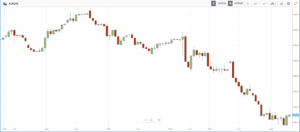The ASX200 looks set to start the week in the red after a tough week in global markets. The ASX200 finished down 2.44% last week, with all sectors seeing weekly losses for the second straight week. In the US, the S&P500 dropped 4.65%, closing at 3693, just 27 points from the June low of 3,666.
3 things that happened last week:
1. RBA Minutes
The minutes of the Reserve Bank of Australia’s (RBA) September 6th meeting revealed that the central bank believes interest rates are approaching “normal settings” after raising rates by 50 basis points earlier in the month. The same minutes revealed that the board expects to raise rates further in the coming months but has no set path, but the big question is the size of the next hike, 25 or 50 bps? Other global central banks, such as the Fed, are continuing to aggressively raise interest rates, which may now influence the board’s next decision. Phillip Lowe has already stated that he wants to allow the current financial tightening to take effect, however he then risks allowing inflation to accelerate as seen in other global economies.
2. Fed Rate Decision
Last week, the Federal Reserve raised interest rates by 75 basis points for the third time in a row. This is now the most aggressive rate hike cycle since 1980, and they must remain aggressive to keep inflation under control. This hike wasn’t huge news for markets because a 75bps point increase was practically guaranteed. However, the shock for markets is that rates may remain higher for longer, with the median dot plot now at 4.6% for 2023, which will likely weigh on growth assets.
3. A winner and loser last week from the S&P/ASX200
Despite a negative week on the ASX200, coal miners led the charge, with Whitehaven Coal (WHC) climbing more than 10% and trading at a new record high. It comes after an Annual General Meeting to shareholders, which saw the company looking to extend its share buy-back program.
Xero Ltd (XRO) was one of the worst performers on the ASX, falling 9.37% with global tech shares selling off globally. Risk assets, such as tech stocks, were dumped by investors over fears of further financial tightening from central banks in the coming months. The local tech sector fell by 4.4% for the week.

*Data accurate as of 25/09/2022. Data Source: eToro and Bloomberg
3 things to watch next week:
1. Retail Sales. Are we still spending?
On Wednesday this week, retail sales data for September will be released. This will be another key data point that the RBA will be watching, and it will once again give us further insight into the mind of the Australian consumer. Last month, retail sales rose by 1.3%, marking the strongest retail trade pace since March. In 2022 consumers have been resilient to the rising cost-of-living pressures, and this new data will likely show that retail sales were strong once again. However, this isn’t something that can be sustained indefinitely. Consumers will soon feel the RBA’s financial tightening pressures, but if you’ve been out on a sunny day in Sydney during September, you’ll know this isn’t happening just yet.
2. US Q3 earnings start again. Yes, they’re here already!
It seems like only yesterday that we were wrapping up a relatively strong Q2 earnings season in the United States, but Q3 earnings are already upon us. The big name to watch this week will be Nike. These earnings are another great way for investors to read what the consumer is doing, given that Nike is the largest sports apparel brand in the world. Nike has had a difficult year with supply chain issues and rising inflation, but its strong brand presence has kept sales healthy. Its direct-to-consumer strategy is accelerating, laying the groundwork for further long-term growth. However, the short-term headwinds moving into this latest report, including sales volatility in China, currency headwinds, and excess inventory, will make for a challenging quarter. Expectations are for earnings of USD$0.92 and revenue of USD$12.29 billion.
3. US PCE Inflation
Last week, the US Federal Reserve lifted interest rates by 75bps, with US inflation remaining elevated. This week we will receive another critical reading on inflation, with the core personal consumption expenditures (PCE) price index for August being released on Friday. This reading has been falling since it peaked in February this year at 5.3%. Last month’s reading for July showed PCE fell to 4.6%, the lowest level for 2022. PCE inflation is one of the most watched data points by the Fed as it is said to be less volatile and more accurate than CPI. Estimates for this month’s reading are set to show an increase to 4.8%, which could sway the Federal Reserve towards another 75bps at its next meeting with only two rate decisions left this year, which could influence any further increases by our own RBA.
*Data accurate as of 25/09/2022.
Disclaimer:
This communication is general information and education purposes only and should not be taken as financial product advice, a personal recommendation, or an offer of, or solicitation to buy or sell, any financial product. It has been prepared without taking your objectives, financial situation or needs into account. Any references to past performance and future indications are not, and should not be taken as, a reliable indicator of future results. eToro makes no representation and assumes no liability as to the accuracy or completeness of the content of this publication.

